
How Machine Learning Is Transforming Data Analytics Workflows
Last updated: October 18, 2025 Read in fullscreen view
- 25 Nov 2025
 How AI Agents Are Redefining Enterprise Automation and Decision-Making 22/36
How AI Agents Are Redefining Enterprise Automation and Decision-Making 22/36 - 05 Oct 2025
 The New Facebook Algorithm: A Paradigm Shift in Content Discovery 19/46
The New Facebook Algorithm: A Paradigm Shift in Content Discovery 19/46 - 01 Jul 2025
 The Hidden Costs of Not Adopting AI Agents: Risk of Falling Behind 17/108
The Hidden Costs of Not Adopting AI Agents: Risk of Falling Behind 17/108 - 07 Nov 2025
 Online vs. Offline Machine Learning Courses in South Africa: Which One Should You Pick? 16/30
Online vs. Offline Machine Learning Courses in South Africa: Which One Should You Pick? 16/30 - 05 Jul 2020
 What is Sustaining Software Engineering? 14/1188
What is Sustaining Software Engineering? 14/1188 - 03 Nov 2023
 Why Is Billable Viable Product An Alternative To Minimum Viable Product? 12/165
Why Is Billable Viable Product An Alternative To Minimum Viable Product? 12/165 - 21 Nov 2025
 The Rise of AgentOps: How Enterprises Are Managing and Scaling AI Agents 12/43
The Rise of AgentOps: How Enterprises Are Managing and Scaling AI Agents 12/43 - 20 Mar 2022
 What is a Multi-Model Database? Pros and Cons? 11/1063
What is a Multi-Model Database? Pros and Cons? 11/1063 - 12 Oct 2022
 14 Common Reasons Software Projects Fail (And How To Avoid Them) 10/504
14 Common Reasons Software Projects Fail (And How To Avoid Them) 10/504 - 06 Nov 2025
 Top 10 AI Development Companies in the USA to Watch in 2026 10/36
Top 10 AI Development Companies in the USA to Watch in 2026 10/36 - 28 Jul 2025
 Data Modernization for SMBs: Small Steps, Big Impact 9/115
Data Modernization for SMBs: Small Steps, Big Impact 9/115 - 01 Mar 2023
 What is Unit Testing? Pros and cons of Unit Testing? 8/355
What is Unit Testing? Pros and cons of Unit Testing? 8/355 - 18 Jul 2024
 The 8 Best ways to Innovate your SAAS Business Model in 2024 8/204
The 8 Best ways to Innovate your SAAS Business Model in 2024 8/204 - 30 Jul 2024
 The Future of IT Consulting: Trends and Opportunities 8/131
The Future of IT Consulting: Trends and Opportunities 8/131 - 30 Jan 2022
 What Does a Sustaining Engineer Do? 7/554
What Does a Sustaining Engineer Do? 7/554 - 20 Jan 2022
 TIGO Self-Organization Practice: Change Management Workflow 6/430
TIGO Self-Organization Practice: Change Management Workflow 6/430 - 13 Oct 2021
 Outsourcing Software Development: MVP, Proof of Concept (POC) and Prototyping. Which is better? 6/424
Outsourcing Software Development: MVP, Proof of Concept (POC) and Prototyping. Which is better? 6/424 - 28 Jul 2022
 POC, Prototypes, Pilots and MVP: What Are the Differences? 6/606
POC, Prototypes, Pilots and MVP: What Are the Differences? 6/606 - 27 Jul 2024
 Positive Psychology in the Digital Age: Future Directions and Technologies 6/337
Positive Psychology in the Digital Age: Future Directions and Technologies 6/337 - 14 Aug 2024
 From Steel to Software: The Reluctant Evolution of Japan's Tech Corporates 6/488
From Steel to Software: The Reluctant Evolution of Japan's Tech Corporates 6/488 - 05 Aug 2024
 Revisiting the Mistake That Halted Japan's Software Surge 5/320
Revisiting the Mistake That Halted Japan's Software Surge 5/320 - 11 Oct 2022
 Why choose Billable Viable Product (BVP) over Minimum Viable Product (MVP) 5/315
Why choose Billable Viable Product (BVP) over Minimum Viable Product (MVP) 5/315 - 31 Aug 2022
 What are the best practices for software contract negotiations? 5/215
What are the best practices for software contract negotiations? 5/215 - 16 Jun 2022
 Rapid Application Development (RAD): Pros and Cons 5/799
Rapid Application Development (RAD): Pros and Cons 5/799 - 05 Mar 2021
 How do you minimize risks when you outsource software development? 5/317
How do you minimize risks when you outsource software development? 5/317 - 24 Dec 2024
 Artificial Intelligence and Cybersecurity: Building Trust in EFL Tutoring 5/144
Artificial Intelligence and Cybersecurity: Building Trust in EFL Tutoring 5/144 - 07 Oct 2025
 Case Study: Using the “Messaging House” Framework to Build a Digital Transformation Roadmap 5/45
Case Study: Using the “Messaging House” Framework to Build a Digital Transformation Roadmap 5/45 - 31 Dec 2021
 What is a Data Pipeline? 4/187
What is a Data Pipeline? 4/187 - 04 Oct 2022
 Which ERP implementation strategy is right for your business? 4/278
Which ERP implementation strategy is right for your business? 4/278 - 01 Jan 2024
 The pros and cons of the Centralized Enterprise Automation Operating model 4/165
The pros and cons of the Centralized Enterprise Automation Operating model 4/165 - 01 Dec 2023
 Laws of Project Management 3/249
Laws of Project Management 3/249 - 05 Sep 2023
 The Cold Start Problem: How to Start and Scale Network Effects 3/167
The Cold Start Problem: How to Start and Scale Network Effects 3/167 - 09 Jul 2024
 What Is Artificial Intelligence and How Is It Used Today? 3/216
What Is Artificial Intelligence and How Is It Used Today? 3/216 - 09 Oct 2024
 Short-Form Video Advertising: The Secret to Captivating Your Audience 3/107
Short-Form Video Advertising: The Secret to Captivating Your Audience 3/107 - 22 Sep 2022
 Why is it important to have a “single point of contact (SPoC)” on an IT project? 3/843
Why is it important to have a “single point of contact (SPoC)” on an IT project? 3/843 - 12 Dec 2021
 Zero Sum Games Agile vs. Waterfall Project Management Methods 3/373
Zero Sum Games Agile vs. Waterfall Project Management Methods 3/373 - 18 Jul 2021
 How To Ramp Up An Offshore Software Development Team Quickly 3/516
How To Ramp Up An Offshore Software Development Team Quickly 3/516 - 20 Jan 2021
 Fail early, fail often, fail cheap, fail safe but always fail forward 3/688
Fail early, fail often, fail cheap, fail safe but always fail forward 3/688 - 27 Feb 2025
 How AI Agents are Changing Software Development? 3/170
How AI Agents are Changing Software Development? 3/170 - 21 Apr 2025
 Agent AI in Multimodal Interaction: Transforming Human-Computer Engagement 2/147
Agent AI in Multimodal Interaction: Transforming Human-Computer Engagement 2/147 - 05 Jun 2025
 How AI-Driven Computer Vision Is Changing the Face of Retail Analytics 2/77
How AI-Driven Computer Vision Is Changing the Face of Retail Analytics 2/77 - 25 Jan 2025
 The Decline of Traditional SaaS and the Rise of AI-first Applications 2/73
The Decline of Traditional SaaS and the Rise of AI-first Applications 2/73 - 17 Oct 2025
 MLOps vs AIOps: What’s the Difference and Why It Matters 2/66
MLOps vs AIOps: What’s the Difference and Why It Matters 2/66 - 28 Nov 2025
 How AI Will Transform Vendor Onboarding and Seller Management in 2026 2/19
How AI Will Transform Vendor Onboarding and Seller Management in 2026 2/19 - 02 Nov 2021
 [Case Study] Streamlined Data Reporting using Tableau 2/276
[Case Study] Streamlined Data Reporting using Tableau 2/276 - 28 Oct 2022
 Build Operate Transfer (B.O.T) Model in Software Outsourcing 2/361
Build Operate Transfer (B.O.T) Model in Software Outsourcing 2/361 - 04 Oct 2021
 Product Validation: The Key to Developing the Best Product Possible 2/295
Product Validation: The Key to Developing the Best Product Possible 2/295 - 11 Nov 2021
 What is an IT Self-service Portal? Why is it Important to Your Business? 2/364
What is an IT Self-service Portal? Why is it Important to Your Business? 2/364 - 08 Aug 2022
 Difference between Power BI and Datazen 2/297
Difference between Power BI and Datazen 2/297 - 01 May 2024
 Warren Buffett’s Golden Rule for Digital Transformation: Avoiding Tech Overload 2/188
Warren Buffett’s Golden Rule for Digital Transformation: Avoiding Tech Overload 2/188 - 21 Aug 2024
 What is Singularity and Its Impact on Businesses? 2/324
What is Singularity and Its Impact on Businesses? 2/324 - 10 Sep 2024
 Leading Remote Teams in Hybrid Work Environments 2/125
Leading Remote Teams in Hybrid Work Environments 2/125 - 04 Oct 2023
 The Future of Work: Harnessing AI Solutions for Business Growth 2/258
The Future of Work: Harnessing AI Solutions for Business Growth 2/258 - 18 Aug 2024
 The Future of Web Development: Emerging Trends and Technologies Every Developer Should Know 2/173
The Future of Web Development: Emerging Trends and Technologies Every Developer Should Know 2/173 - 21 Dec 2023
 Top 12 Low-Code Platforms To Use in 2024 2/1147
Top 12 Low-Code Platforms To Use in 2024 2/1147 - 31 Dec 2022
 The New Normal for Software Development 2/343
The New Normal for Software Development 2/343 - 02 Dec 2022
 Success Story: Satsuki - Sales Management Software, back office app for School Subscription Management 2/219
Success Story: Satsuki - Sales Management Software, back office app for School Subscription Management 2/219 - 05 Aug 2024
 Affordable Tech: How Chatbots Enhance Value in Healthcare Software 1/142
Affordable Tech: How Chatbots Enhance Value in Healthcare Software 1/142 - 12 Aug 2024
 Understanding Google Analytics in Mumbai: A Beginner's Guide 1/84
Understanding Google Analytics in Mumbai: A Beginner's Guide 1/84 - 03 Jan 2024
 Why Partnership is important for Growth? 1/145
Why Partnership is important for Growth? 1/145 - 05 Sep 2024
 The Inverted Approach: A Guide to Identifying Software Risks with Reverse Brainstorming 1/219
The Inverted Approach: A Guide to Identifying Software Risks with Reverse Brainstorming 1/219 - 29 Oct 2024
 Top AI Tools and Frameworks You’ll Master in an Artificial Intelligence Course 1/328
Top AI Tools and Frameworks You’ll Master in an Artificial Intelligence Course 1/328 - 22 Nov 2024
 The Role of AI in Enhancing Business Efficiency and Decision-Making 1/154
The Role of AI in Enhancing Business Efficiency and Decision-Making 1/154 - 02 Dec 2024
 The Intersection of AI and Business Analytics: Key Concepts to Master in Your Business Analytics Course 1/252
The Intersection of AI and Business Analytics: Key Concepts to Master in Your Business Analytics Course 1/252 - 31 Dec 2022
 Future of Software Development Trends and Predictions for 2023 1/120
Future of Software Development Trends and Predictions for 2023 1/120 - 16 Aug 2022
 What is a Headless CMS? 1/225
What is a Headless CMS? 1/225 - 16 Sep 2022
 Examples Of Augmented Intelligence In Today’s Workplaces Shaping the Business as Usual 1/394
Examples Of Augmented Intelligence In Today’s Workplaces Shaping the Business as Usual 1/394 - 03 Apr 2021
 How digital asset management streamlines your content workflow? 1/312
How digital asset management streamlines your content workflow? 1/312 - 13 Feb 2021
 Why is TIGOSOFT a software house for Enterprise Application Development? 1/336
Why is TIGOSOFT a software house for Enterprise Application Development? 1/336 - 13 Nov 2021
 What Is Bleeding Edge Technology? Are bleeding edge technologies cheaper? 1/454
What Is Bleeding Edge Technology? Are bleeding edge technologies cheaper? 1/454 - 25 Apr 2021
 What is outstaffing? 1/229
What is outstaffing? 1/229 - 20 Aug 2025
 What Is Agentic AI? The Next Phase of Artificial Intelligence 1/96
What Is Agentic AI? The Next Phase of Artificial Intelligence 1/96 - 20 Feb 2025
 How Machine Learning is Shaping the Future of Digital Advertising 1/76
How Machine Learning is Shaping the Future of Digital Advertising 1/76 - 31 Jul 2025
 Top WooCommerce Pre-Order Plugins with Countdown & Discounts /70
Top WooCommerce Pre-Order Plugins with Countdown & Discounts /70 - 23 Jun 2025
 AI Avatars in the Metaverse: How Digital Beings Are Redefining Identity and Social Interaction /85
AI Avatars in the Metaverse: How Digital Beings Are Redefining Identity and Social Interaction /85 - 27 Aug 2025
 How AI Consulting Is Driving Smarter Diagnostics and Hospital Operations /66
How AI Consulting Is Driving Smarter Diagnostics and Hospital Operations /66 - 15 Aug 2025
 Quantum Technology: Global Challenges and Opportunities for Innovators /56
Quantum Technology: Global Challenges and Opportunities for Innovators /56 - 29 Aug 2025
 How AI Is Transforming Modern Management Science /33
How AI Is Transforming Modern Management Science /33 - 22 Sep 2025
 Why AI Is Critical for Accelerating Drug Discovery in Pharma /53
Why AI Is Critical for Accelerating Drug Discovery in Pharma /53 - 24 Oct 2025
 AI Agents in SaaS Platforms: Automating User Support and Onboarding /51
AI Agents in SaaS Platforms: Automating User Support and Onboarding /51 - 10 Nov 2025
 Multi-Modal AI Agents: Merging Voice, Text, and Vision for Better CX /33
Multi-Modal AI Agents: Merging Voice, Text, and Vision for Better CX /33 - 03 Jul 2022
 What is the difference between Project Proposal and Software Requirements Specification (SRS) in software engineering? /955
What is the difference between Project Proposal and Software Requirements Specification (SRS) in software engineering? /955 - 21 Jun 2021
 6 Useful Tips To Streamline Business Processes and Workflows /515
6 Useful Tips To Streamline Business Processes and Workflows /515 - 19 Oct 2021
 Software development life cycles /628
Software development life cycles /628 - 10 Apr 2022
 What is predictive analytics? Why it matters? /167
What is predictive analytics? Why it matters? /167 - 03 Sep 2022
 The secret of software success: Simplicity is the ultimate sophistication /186
The secret of software success: Simplicity is the ultimate sophistication /186 - 08 May 2024
 Time Unlocked: Mastering the Pomodoro Technique Against Parkinson's Law /189
Time Unlocked: Mastering the Pomodoro Technique Against Parkinson's Law /189 - 25 Sep 2024
 Enhancing Decision-Making Skills with an MBA: Data-Driven Approaches for Business Growth /177
Enhancing Decision-Making Skills with an MBA: Data-Driven Approaches for Business Growth /177 - 19 Apr 2024
 What is Skills-Based Approach & Why Does it Matter? /119
What is Skills-Based Approach & Why Does it Matter? /119 - 10 Sep 2024
 AI in Email Marketing: Personalization and Automation /154
AI in Email Marketing: Personalization and Automation /154 - 06 Mar 2024
 [SemRush] What Are LSI Keywords & Why They Don‘t Matter /131
[SemRush] What Are LSI Keywords & Why They Don‘t Matter /131 - 31 Dec 2023
 Software Development Outsourcing Trends to Watch Out for in 2024 /160
Software Development Outsourcing Trends to Watch Out for in 2024 /160 - 06 Nov 2023
 How do you streamline requirement analysis and modeling? /184
How do you streamline requirement analysis and modeling? /184 - 18 Jan 2024
 Self-healing code is the future of software development /200
Self-healing code is the future of software development /200 - 19 Dec 2023
 How AI is Transforming Software Development? /275
How AI is Transforming Software Development? /275 - 15 Apr 2024
 Weights & Biases: The AI Developer Platform /170
Weights & Biases: The AI Developer Platform /170
Integration of Machine Learning Algorithms in Data Analysis
Today's organizations have moved to a data-centric approach which leads to the generation of enormous volumes of data every day. The traditional ways of organizing, analyzing, and using data is not effective or possible anymore. Machine learning (ML) is the solution to this challenge. ML optimizes the processes of gathering value from data by transforming analytics workflows into ones that are far more intelligent, faster, and precise.
As a consequence, ML is incorporated into business processes as an essential existing component rather than a future-concept. It now automates the processing of data, helps in real-time decision making, and pattern detection at levels which yield better ROI.
Manual Data Processing Using Conventional Methods vs. Analysis Based on Automation and ML Techniques
Prior to the introduction of ML, data analytics was done using manual data processes through fixed templates/model frameworks defined upfront. Based on manually created historical data sets, analysts would clean, pot, interpret data with the help of some determine heuristics. Even when this approach seemed to work during the time, there was always the question of how fast, how scalable, and how flexible it really was.
Machine learning-based advanced analytics offer more efficacy:
- Automation: A significant reduction in the work done by human hands.
- Adaptability: Learns from new data inputs without human intervention.
- Predictive Power: Anticipates future trends instead of just analyzing past ones.
- Scalability: Manages and analyzes big data with minimal performance loss.
These improvements mean businesses can now move from reactive to proactive decision-making, gaining a significant competitive edge.
Key Ways Machine Learning Enhances Data Analytics Workflows
Improved Data Preparation and Cleaning
Data preparation is frequently the most intense ‘manual’ effort in the process of doing analytics workflows. The raw data has a myriad of issues including missing values, duplicates, inconsistencies, and many more that make it unreliable.
Machine Learning helps automate a great portion of the cleansing process. ML-powered advanced data quality tools automatically discover and intelligently fill gaps or inconsistencies in datasets to make them clean and ready for analysis. These tools progressively adjust their algorithms based on the data they analyze, thus reducing human intervention, optimizing the overall data health, and improving their methods over time.
Advanced Anomaly Detection
Looking for relationships among trends, patterns, or intersecting anomalies in large datasets is a tedious job for people. Neural networks, along with other clustering algorithms like are an example of the AI counterparts that are trained to observe and do these things to find patterns that are hidden.
Such detection is especially important for the domains of healthcare, finance and retail where minor changes with slight impact can offer great value.
Prescriptive and Predictive Analytics
ML extends data analytics beyond descriptive statistics into predictive and prescriptive realms:
- Predictive analytics uses historical data to forecast future events (e.g., sales forecasts, customer churn predictions).
- Prescriptive analytics suggests actions based on those predictions (e.g., personalized marketing strategies, optimized inventory management).
As more data become available, their algorithms seam to self-learn, make accurate forecasts and offer fitting recommendations, all evolving over time, as businesses never become outdated.
Processing of Data in Real Time
The use of IoT devices, social media, and online shopping have all contributed to the need for real-time data processing. Machine learning is particularly efficient in handling burst data, which is incoming at very high rates currently, as instant data analysis enables unparalleled data insights.
Helps organizations settle customer queries at high speed, instantly detect fraud, and marketer react to sudden changes in trends.
Most Popular Machine Learning Approach Employed In Data Analytics
Supervised Learning
In supervised learning, Models are trained using labeled datasets which means every input is accompanied with a correct answer. It is especially useful in classification tasks such as spam detection and predicting anything which regression can do like housing prices.
Decision Trees and Support Vector Machines, which supervised learning employs, are essential in analytics done on structured data that have measurable and known results.
Unsupervised Learning
Algorithms and automated models operate without guidance or predefined outcomes in relationships. Associative models deal with unlabeled data, working on algorithms identifying outcomes without pre-existing context knowledge. Clustering and dimensionality reduction are commonly referred to techniques.
One of the challenges supervised learning overcomes is customer segmentation. Businesses incorporate machine learning to identify customer segments and customer insights in a bid to uncover hidden patterns, enabling to harness refine and inform critical strategic decisions.
Reinforcement Learning
Rote learning is one outdated method to describe reinforcement learning. Training through reward and punishment is often incorporated in learning modules. Learning models are trained on consequences of two types – reward and penalty. This approach is especially helpful to systems that have to make a number of decisions in a sequence e.g. robotics, recommendation engines, gaming, and more.
While the approach is softer, reinforcement learning is beneficial in providing powerful outcomes for systems due to enabling learners to decide and improve best possible outcomes to chosen actions via continual interactions with the surroundings.
Advancements of Applying Machine Learning as a Core Component in Data Processing Systems
Application of ML technology into data processing gives a whole new direction in business operations and profoundly impacts critical decision-making evaluative and planning processes in ways never experienced before:
- Efficiency: Automates tedious and time-intensive tasks.
- Scalability: Handles growing volumes of data without requiring proportional increases in human resources.
- Accuracy: Boosts the dependability of forecasts and information.
- Personalization: Powers marketing and customer support service strategies at an individual level.
- Risk Management: Accurate and earlier detection of potential risks and frauds.
With machine learning, businesses have increased strategic advantage as they are able to make intelligent, data driven decisions at unprecedented speeds.
Challenges and Considerations in Adoption
Streamlined workflows bring convenience to travels when machine learning is integrated into business workflows, but most learners bouquets come with set of sticks. Pushing and pulling has never been so tiresome, and there clearly are some issues that impact the experience of works with machine learning:
Data Quality and Availability
The efficacy or success of machine learning lies within the models, and these models rely on training data. Poor structural and systematic data breeds contests inferior running outputs. Coupled with bearable data handling and manipulation procedures, investing in machine quality managing through tools is a prerequisite.
Model Interpretability
Multi layered neural networks often rely on black box methodology. While unique, interpreting how black boxes arrive at certain decisions can be a greater challenge. For companies in some other space, finding room for complexity within regulatory boundaries may create dangers for sinkholes.
Talent and Expertise Shortages
There is a significant demand for skilled data scientists, ML engineers, and analysts who can build, deploy, and maintain ML models. Organizations may face challenges in sourcing or training personnel with the necessary expertise.
Integration with Legacy Systems
Slowly but surely, many organizations work using an outdated infrastructure which does not support modern computational technologies like Machine Learning (ML). Successful integration relies on strategic planning and step-wise migration approaches.
Future Trends: Machine Learning and the Evolution of Data Analytics
Some of the most crucial things to note about the future of machine learning (ML) within data analytics include the following trends:
Widening Scope of Automated Machine Learning (AutoML)
The step-by-step walk through alongside user-friendly dashboards empowers even users without technical knowledge to set up and tailor predictive algorithm models seamlessly.
More focus on AI ethics and AI data governance
Concerns related to data privacy and biases of the underlying algorithms will force businesses to operate under explicit ethical boundaries when it comes to implementing machine learning solutions.
Integration of NLP and Computer Vision
Advancements in NLP and computer vision will further enhance machine learning powered data analytics by offering intuitive and more powerful mechanisms to interpret unstructured data. Textual, image, and video data will endlessly expand the limits of what can be done with machine learning.
Development of Intelligent Search and Fuzzy Matching
In more advanced fields like analytics into AI, fuzzy matching techniques will continue to refine how algorithms manage imprecise data sets. By utilizing fuzzy matching techniques, businesses can achieve better results in retrieving data, record deduplication, and automated data linking which are crucial for data driven organizational workflows in today's big data era.
Final remarks: Machine Learning and Analytics In The Industry
Transformative machine learning is changing organizational workflows to revolve around data analytics. The sweep of ML’s influence can be noted from data collection to real time insights, automating data prep and analysis, and even providing forecasted insights.
But to fully adopt predictive analytics, organizations need to address the underlying problem by tremendously improving data quality, devising the right instruments and specialists, and becoming responsive to change. Whether by deploying novel models, increasing precision using fuzzy matching software, or implementing data quality management frameworks, transforming analytics is on the path spearheaded by machine learning.
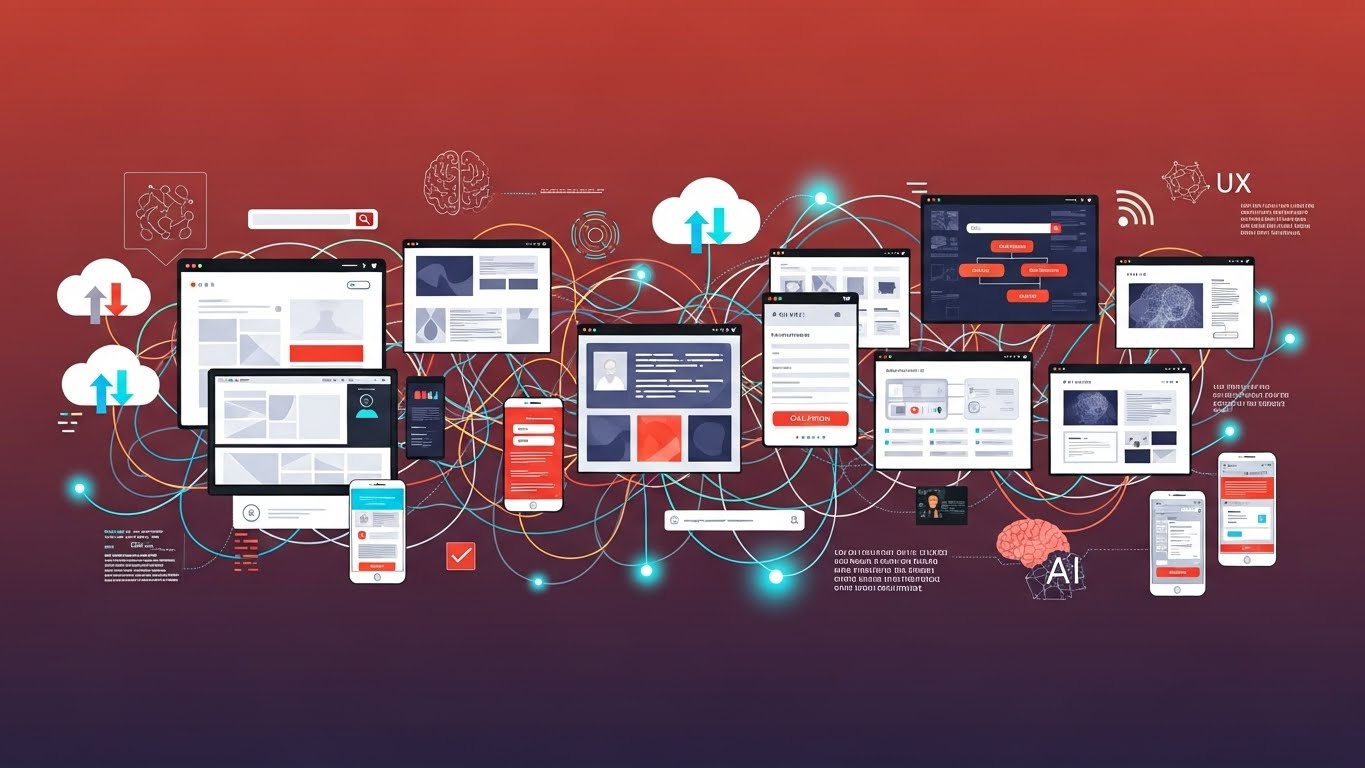



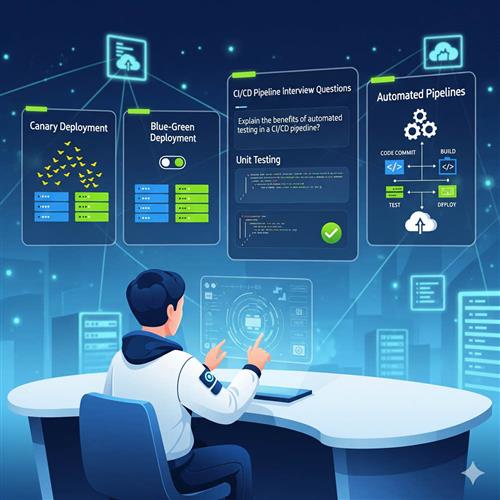





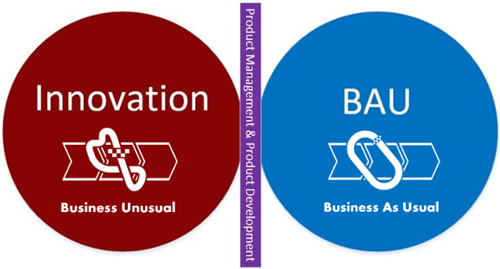

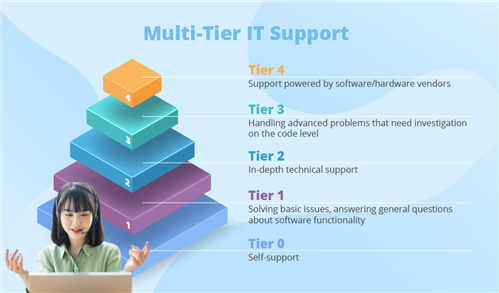

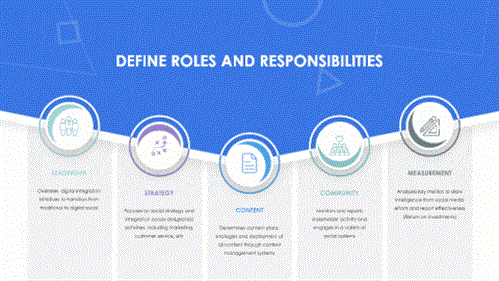



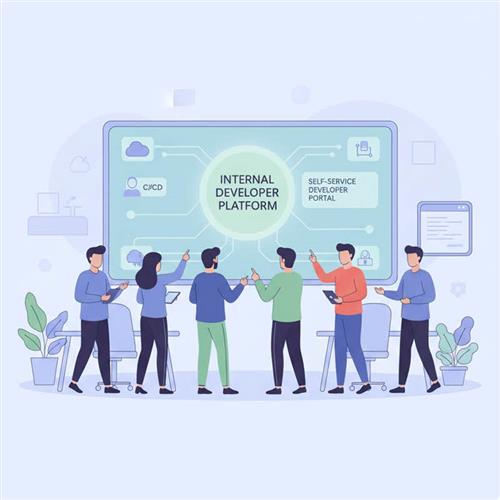

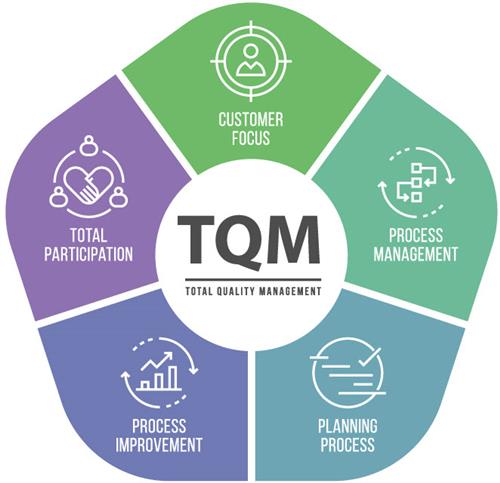












 Link copied!
Link copied!
 Recently Updated News
Recently Updated News